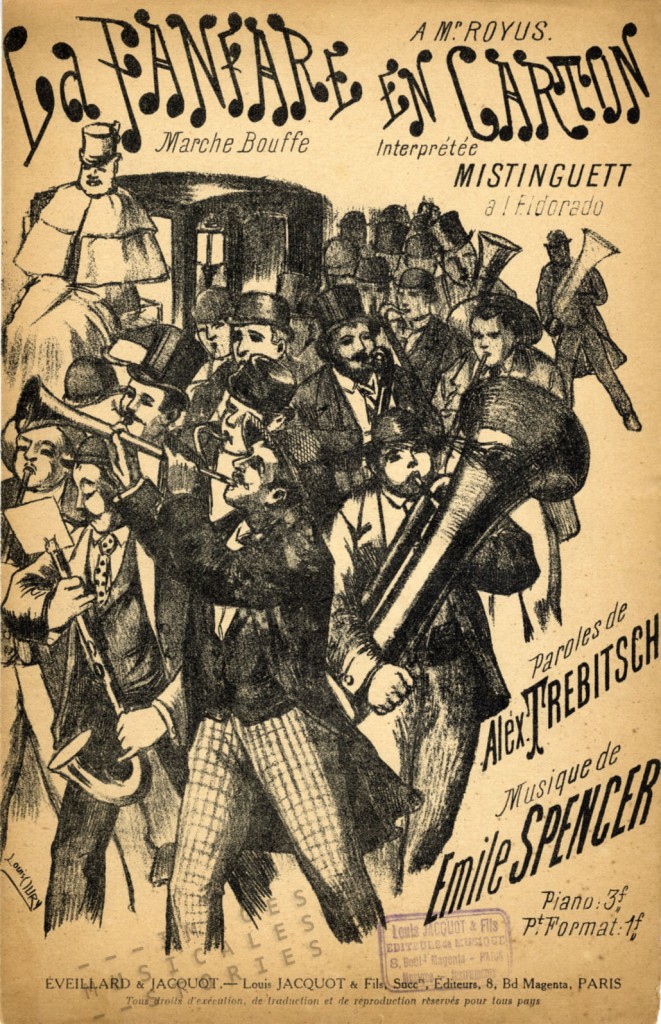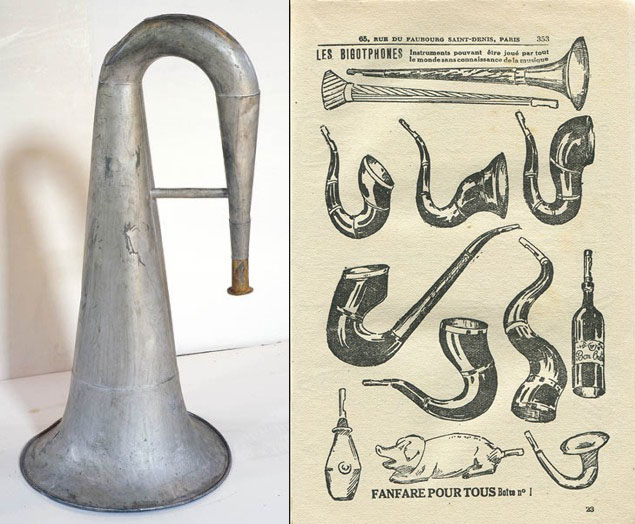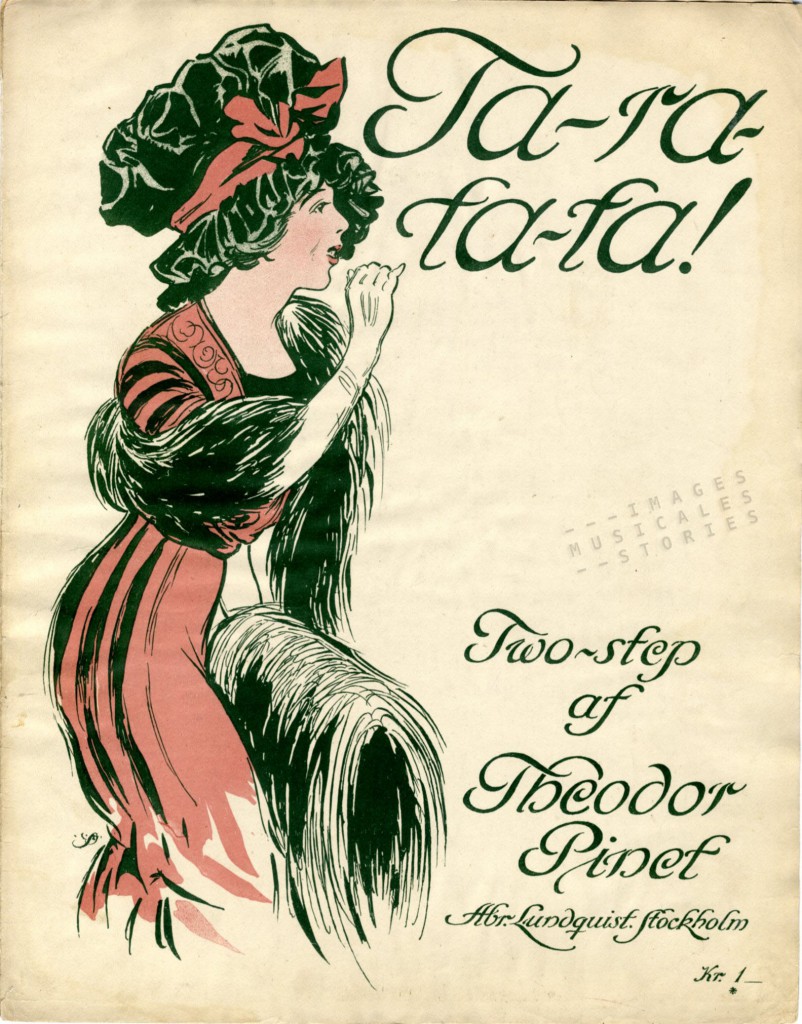
The instruments on this cover are clearly not the ones played in a normal brass band. They are bigophones named after a French toy maker, Romain Bigot. From 1881 on he brought out a series of instruments which were shaped like orchestral ones.

The common feature of most bigophones is that they start at the mouthpiece with some kind of kazoo, which is attached to a horn section made in papier mâché (hence La Fanfare en carton/The Cardboard Brass Band) or in zinc. A bigophone had no finger holes and wasn’t used for any serious music. It was an instrument for carnival music: very noisy, cheap and easy to manufacture with a typical nasal sound. Just because of the nasal twang of the first telephones, bigophone became the slang word for a telephone in France. If you listen to the following fragment it will come as no surprise that a bigophone sounds just like… well, a kazoo.
As no musical knowledge was required to play the bigophone, soon complete bands were formed with it. But these were regarded with contempt by a certain elite. Louis Ferdinand Céline makes this clear in one of his letters, raging against the whole world and more in particular against Louis Aragon and Henri de Régnier: ‘Why do you want me to suddenly start playing the bigophone just because twelve dozen failures around me play it ? I who play the grand piano rather well. Why? To reduce myself to the same level as these shrivelled, constipated, envious, hateful bastards?’

Nonetheless, during 50 years the bigophones would remain immensely popular in France and in Belgium. Numerous bigophonic societies would be established, and even compete one another.

As the bigophones were also popular to put some spark into carnival parties, small ones were made in all kind of funny forms. And if one forgot to bring along his or her bigophone, one could always pretend…


Als te doen gebruikelijk leuk !
In Hamme-Zogge bestaat al sinds 1839 het Koninklijke Houten Muziek. Zij maken hun eigen instrumenten met onderdelen van bomen. Hier een artikeltje : http://www.nieuwsblad.be/cnt/dmf20120604_00172698